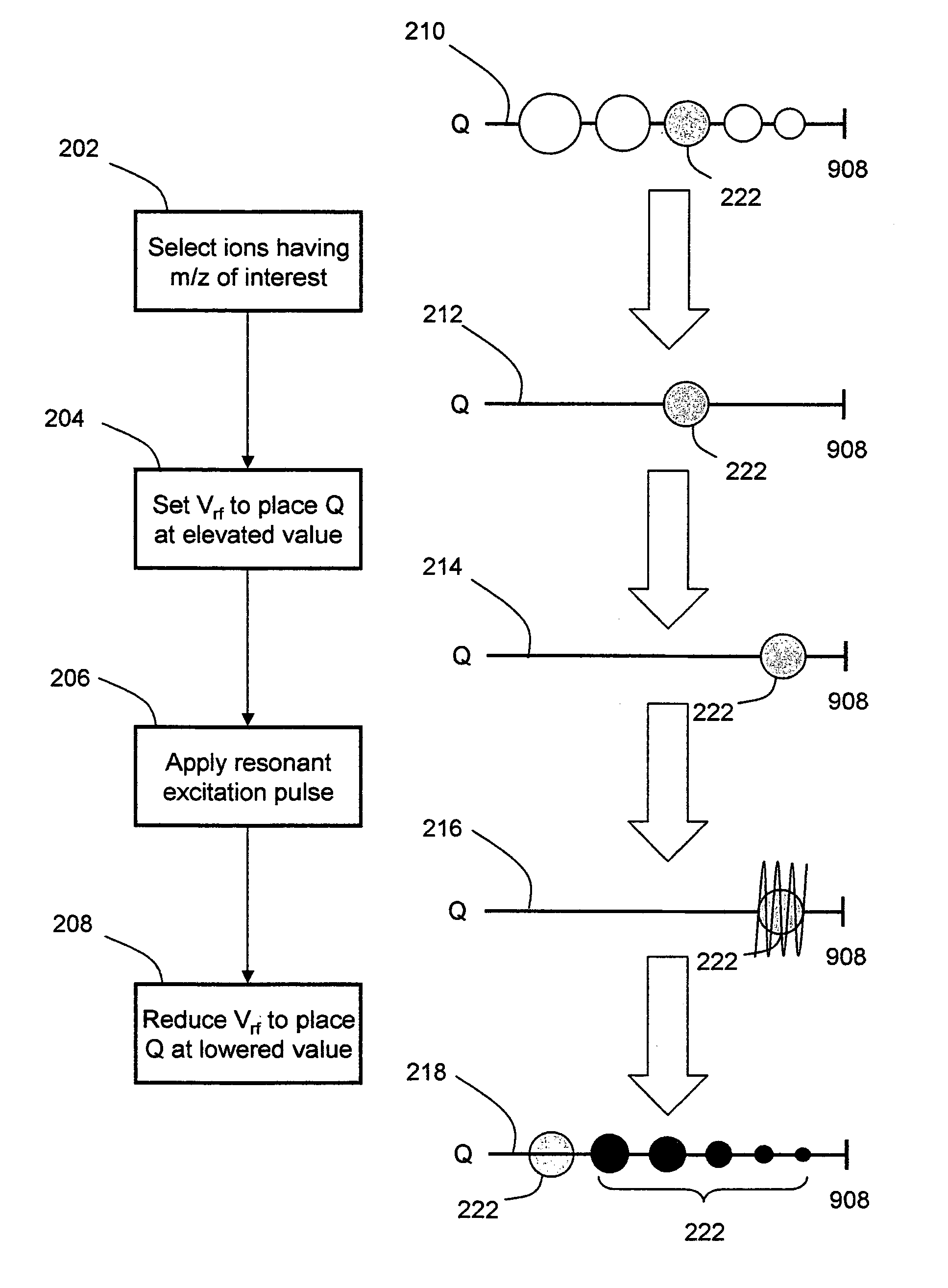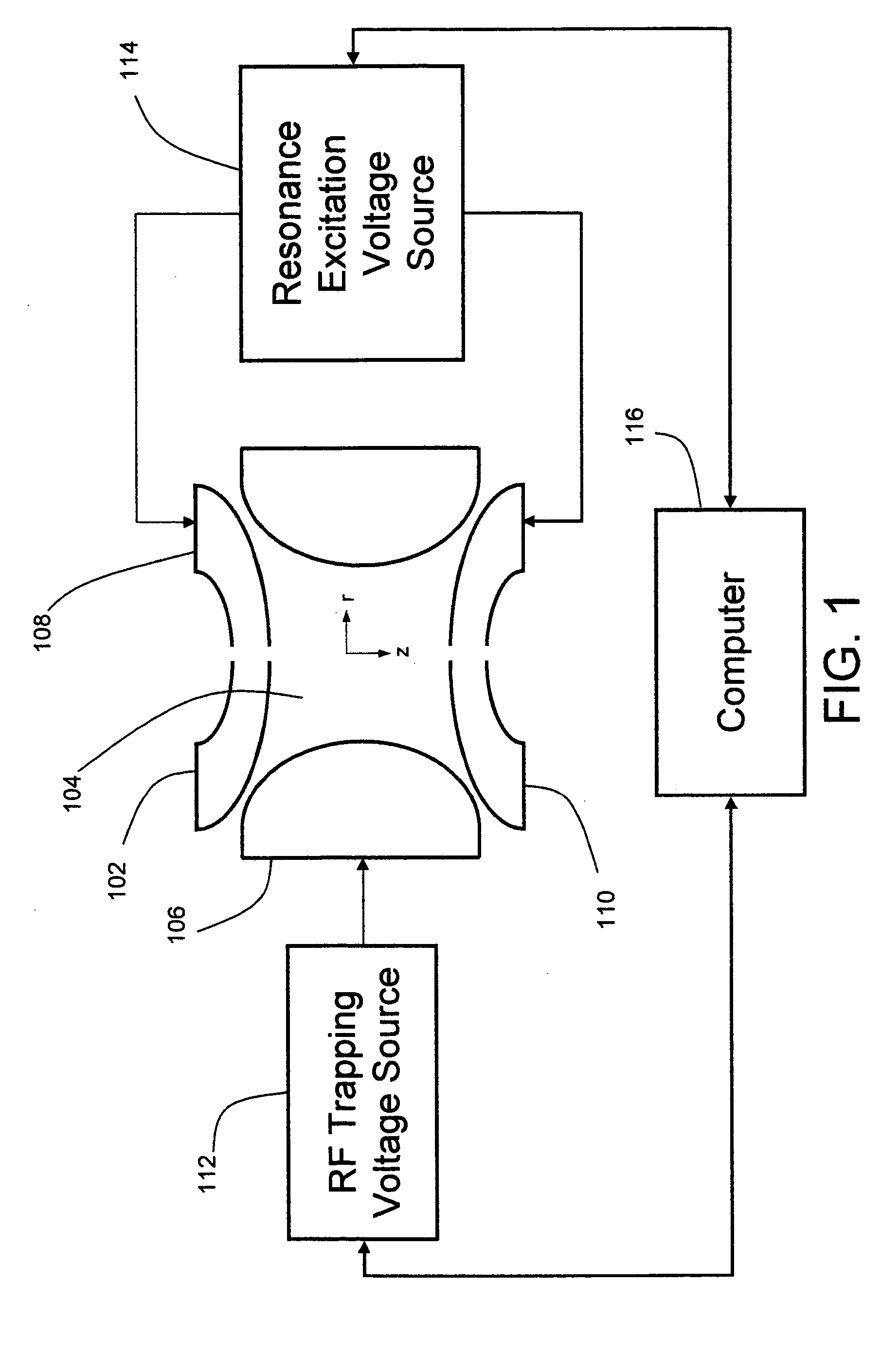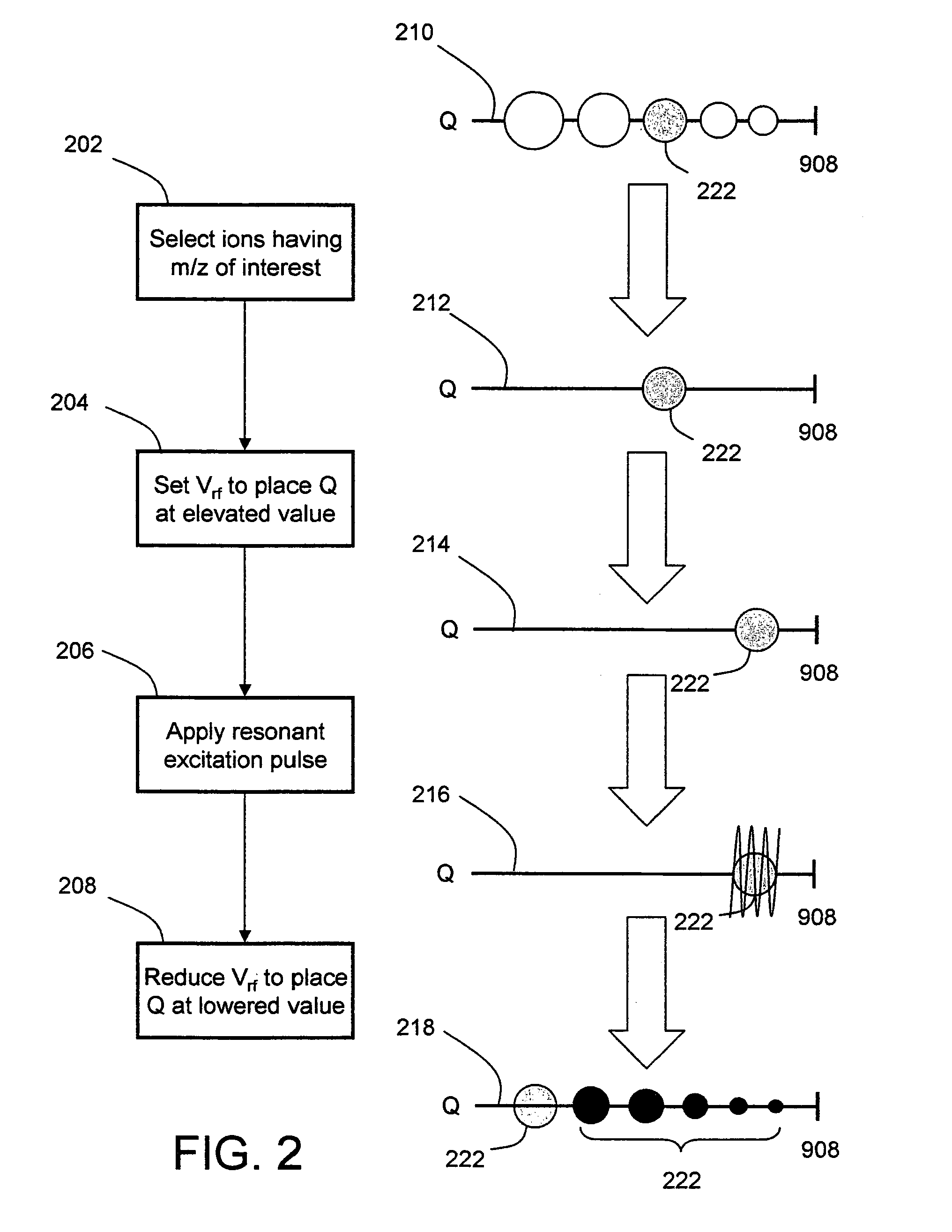High-Q pulsed fragmentation in ion traps
a ion trap and high-q pulse technology, applied in mass spectrometers, separation processes, stability-of-path spectrometers, etc., can solve the problems of increasing q value at the undesirable expense of reducing fragmentation efficiency, and reducing q, so as to reduce lmco, prevent or minimize loss, and improve fragmentation efficiency.
- Summary
- Abstract
- Description
- Claims
- Application Information
AI Technical Summary
Benefits of technology
Problems solved by technology
Method used
Image
Examples
Embodiment Construction
[0020]FIG. 1 is a simplified schematic of an exemplary ion trap 102 and associated components in which embodiments of the invention may be implemented. The design of ion traps for mass spectrometry applications is well known in the art and need not be discussed in detail herein. Generally, ion trap 102 includes a set of electrodes which bound a containment region 104 in which ions are trapped by generation of an RF trapping field. Those skilled in the art will recognize that certain ion trap geometries may also require a direct current (DC) component to be included in the trapping field. In FIG. 1, ion trap 102 is depicted in the form of a conventional three-dimensional (3-D) ion trap having a ring electrode 106 and entrance and end cap electrodes 108 and 110. Apertures formed in end cap electrodes 108 and 110 and aligned across the Z-axis permit injection and expulsion of ions into and from containment region 104. An RF trapping voltage source 112 coupled to ring electrode 106 (typ...
PUM
 Login to View More
Login to View More Abstract
Description
Claims
Application Information
 Login to View More
Login to View More - R&D
- Intellectual Property
- Life Sciences
- Materials
- Tech Scout
- Unparalleled Data Quality
- Higher Quality Content
- 60% Fewer Hallucinations
Browse by: Latest US Patents, China's latest patents, Technical Efficacy Thesaurus, Application Domain, Technology Topic, Popular Technical Reports.
© 2025 PatSnap. All rights reserved.Legal|Privacy policy|Modern Slavery Act Transparency Statement|Sitemap|About US| Contact US: help@patsnap.com



